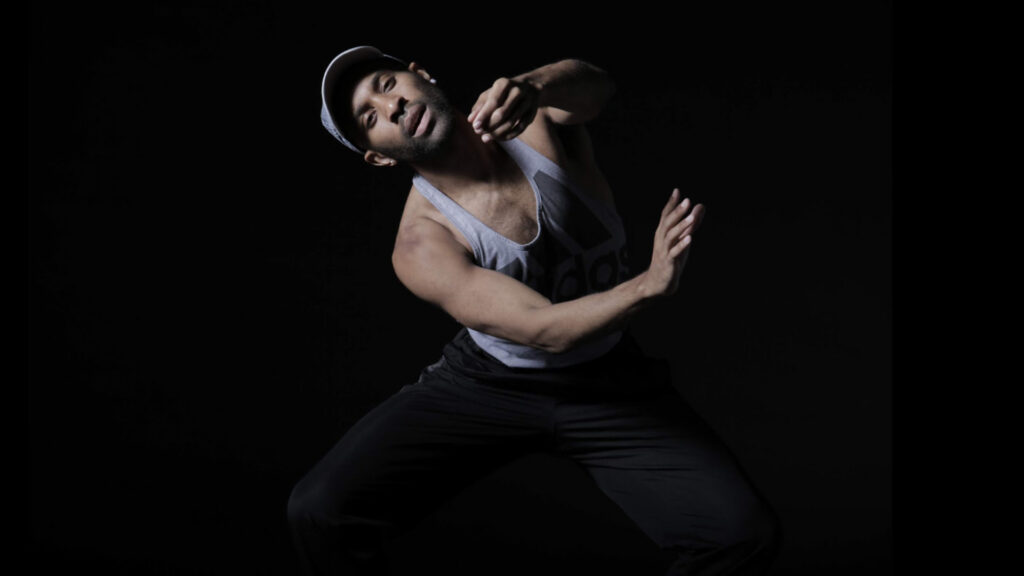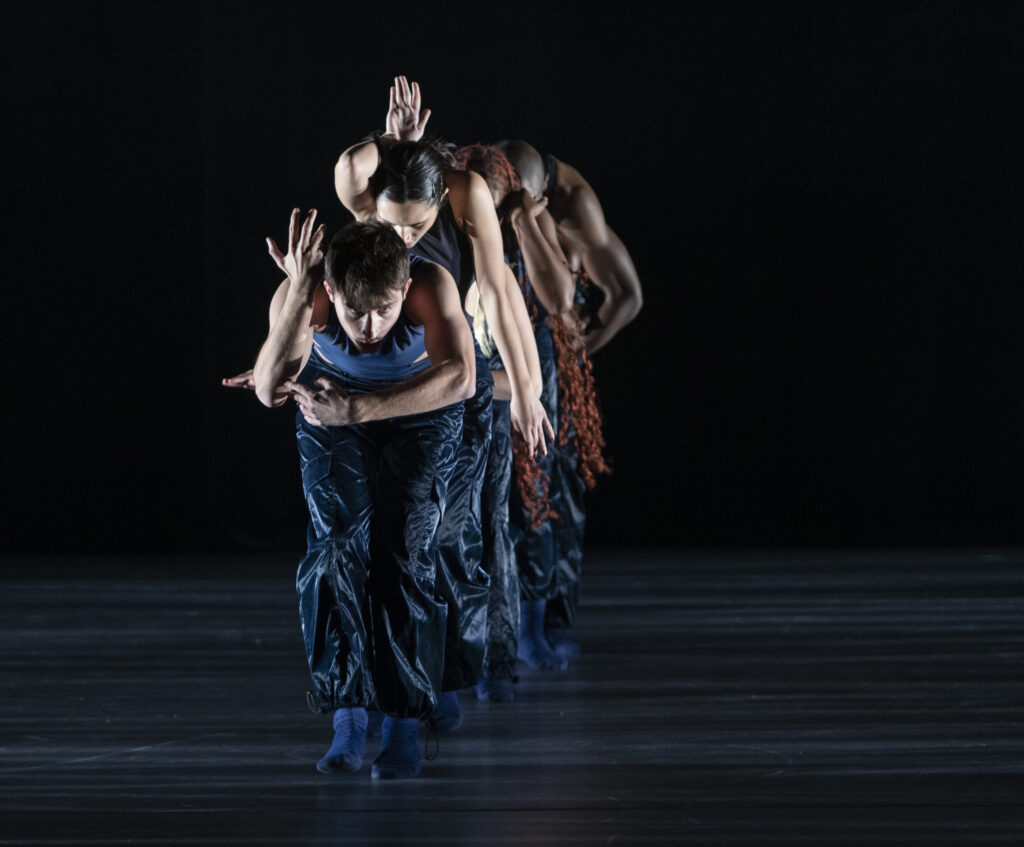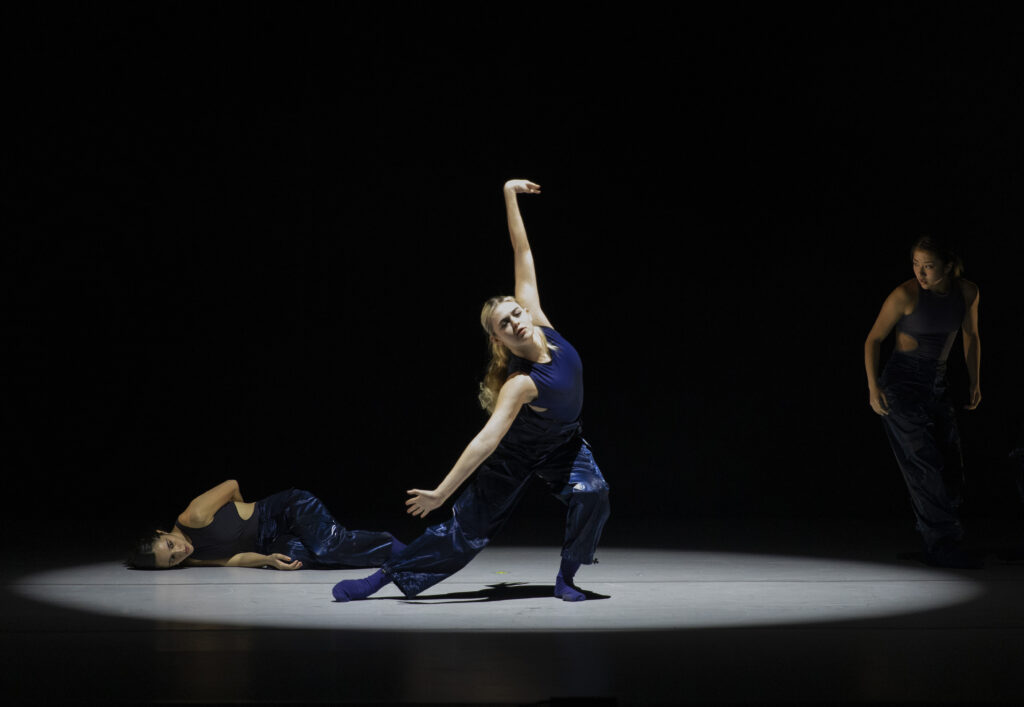Faculty Spotlight with Thomas Ford
April 10, 2024

Get to know the illustrious artists, scholars and practitioners, and faculty at the USC Glorya Kaufman School of Dance through our new Faculty Spotlight series.
Today, we sit down with Assistant Professor of Practice Thomas Ford as he shares his artistic research, teaching experience, passion for choreography and more.
What is your favorite thing about teaching at USC Kaufman?
The conversations. I am always moved by how easily and deeply I can fall into a discursive space with folks across the Kaufman community—faculty, staff and students. Kaufman enlivens the best in us, not just as movers, but also as thinkers and scholars. It is a generative orbit to find yourself floating in. We are having meaningful conversations here around inclusion, equity, interdisciplinarity, excellence and well-being, among other things. Simply said, my workplace is leading the way on so many fronts in the field. It’s not lost on me.
How does your research around identity and culture show up in your teaching practice or your creative process?
One of my priorities has become the centering of care. From my purview, care is many things. It is respecting one’s gender pronouns and their right to shift them as needed or wanted. Care is setting boundaries. It is showing up, for yourself and others. Care also manifests in how I center culture and identity in the practice and scholarly studies of dance. I believe dance is an aesthetic marker of culture, and so I move and build my courses through that lens—always.

Part of that looks like folding my students’ lived experiences into my course content and materials; in essence, caring about who they are and how they are situated within the contours of the course. This happens in my creative research too. In my work, I use dance as a tool to make sense of the intersectionality—or “entangling” as I call it—of my full self.
Throughout your teaching experience, what has been your greatest priority or goal when approaching a class?
A major priority in my teaching practice is to address my students’ needs. It sounds like an obvious goal for any teacher, but I go about it in a pretty meaningful way. By that I mean I am more than willing to depart from my course schedule to support the needs of my students. In the past, I instituted an entire writing workshop in a history class to support my students’ writing. If a particular moment is the only chance I’ll get to better prepare them for their futures, I take it. It is all about them.
As an esteemed and accomplished writer, in what ways has your experience as a dancer informed your writing practice or vice versa?
My identity as a choreographer has defined my approach to writing. I look it as a choreographic exercise—how the words are taking up space on the page, how they’re stylized to emphasize or accent a rhythm. That is choreography. In some ways, the processes mirror each other. In others, they are polar opposites.

What are the benefits or challenges you have found in being able to articulate your artistic experiences and insight into words through your writing?
Words are a big part of our field: they are the first point of contact when applying for grants and residencies. They support those applications in the form of press snippets, published reviews and recommendation letters. They constitute our resumes and CVs, or the programs for a show. So, I recognize the importance of textual language. It shows up in my creative work too—spoken and written.
In these ways, having a writing practice has benefitted me. It has supported my scholarly research; I would not be the author of a book chapter coming out this year or serving on the editorial board of an academic journal without my writing practice.
Still, movement carries the most weight in my life and that is where the challenge of writing lies. With greater precision, I speak into existence who I am and want to be in such a fully realized way through dance. That has proven more difficult to do with my writing.
Do you have a favorite choreographic work you have set? Why?
I really enjoyed making an evening-length work for the Joffrey Ballet School called The Fine Print. I had such high expectations for myself, despite it being the first evening-length piece I had ever choreographed. It has since been re-commissioned, and it stands the test of time. I am proud of that.
When you are not teaching or in the studio, what is your favorite pastime?
I love taking walks with my husband, which is a relic of our lives in New York City. We stroll around Echo Park Lake and Silver Lake weekly. It is a sort of meditation. I love eating the dishes my husband cooks. Sometimes, I dip into cooking for him too! And my favorite hobby of all time: daily phone calls with my mom.
By Rhaine Marquardt (BFA ’26)